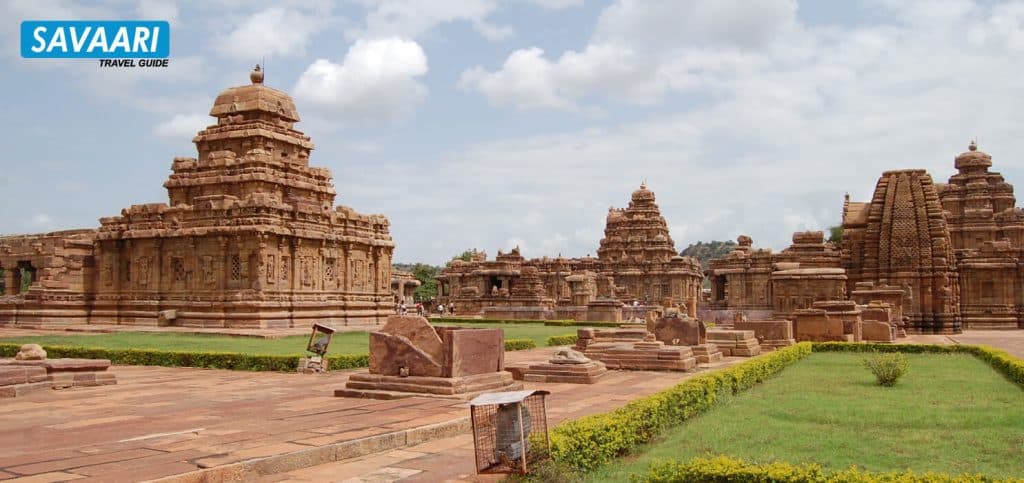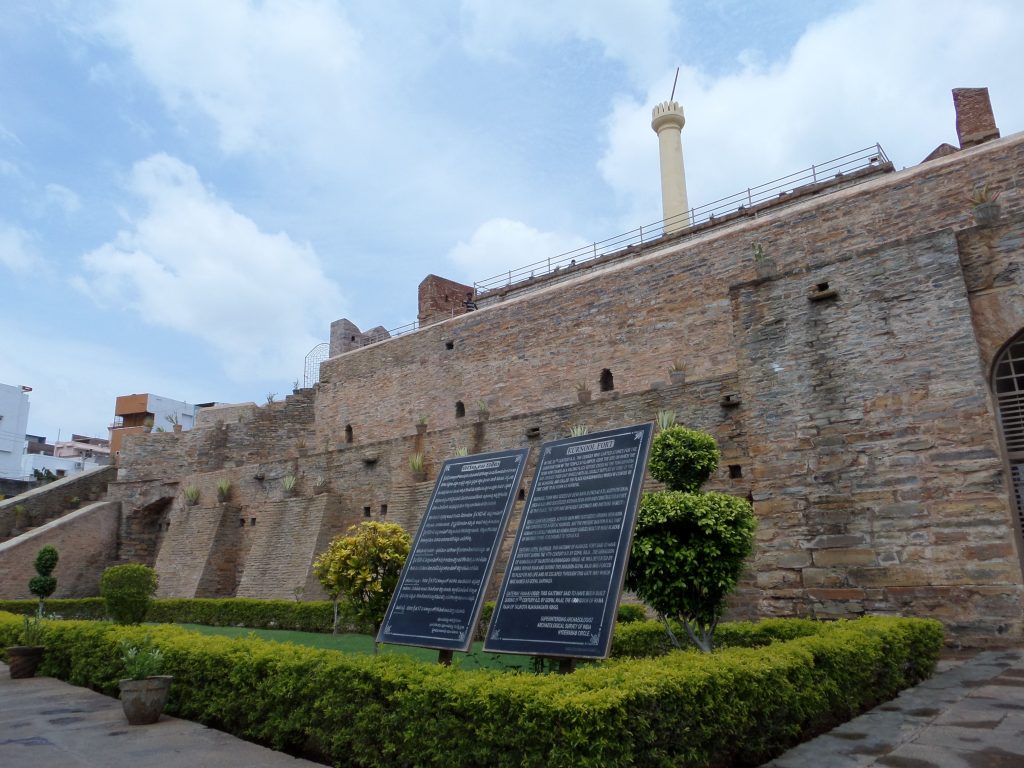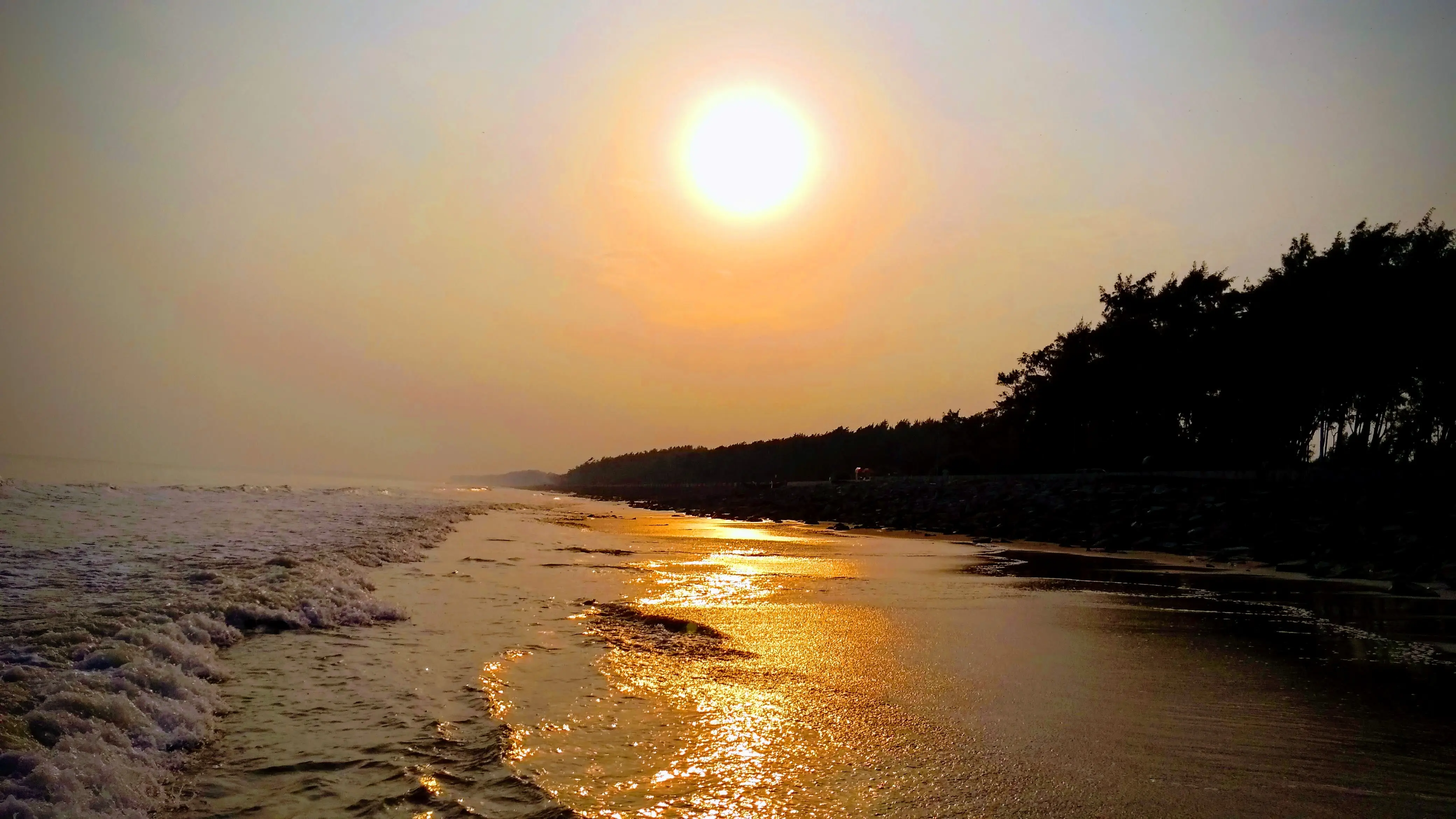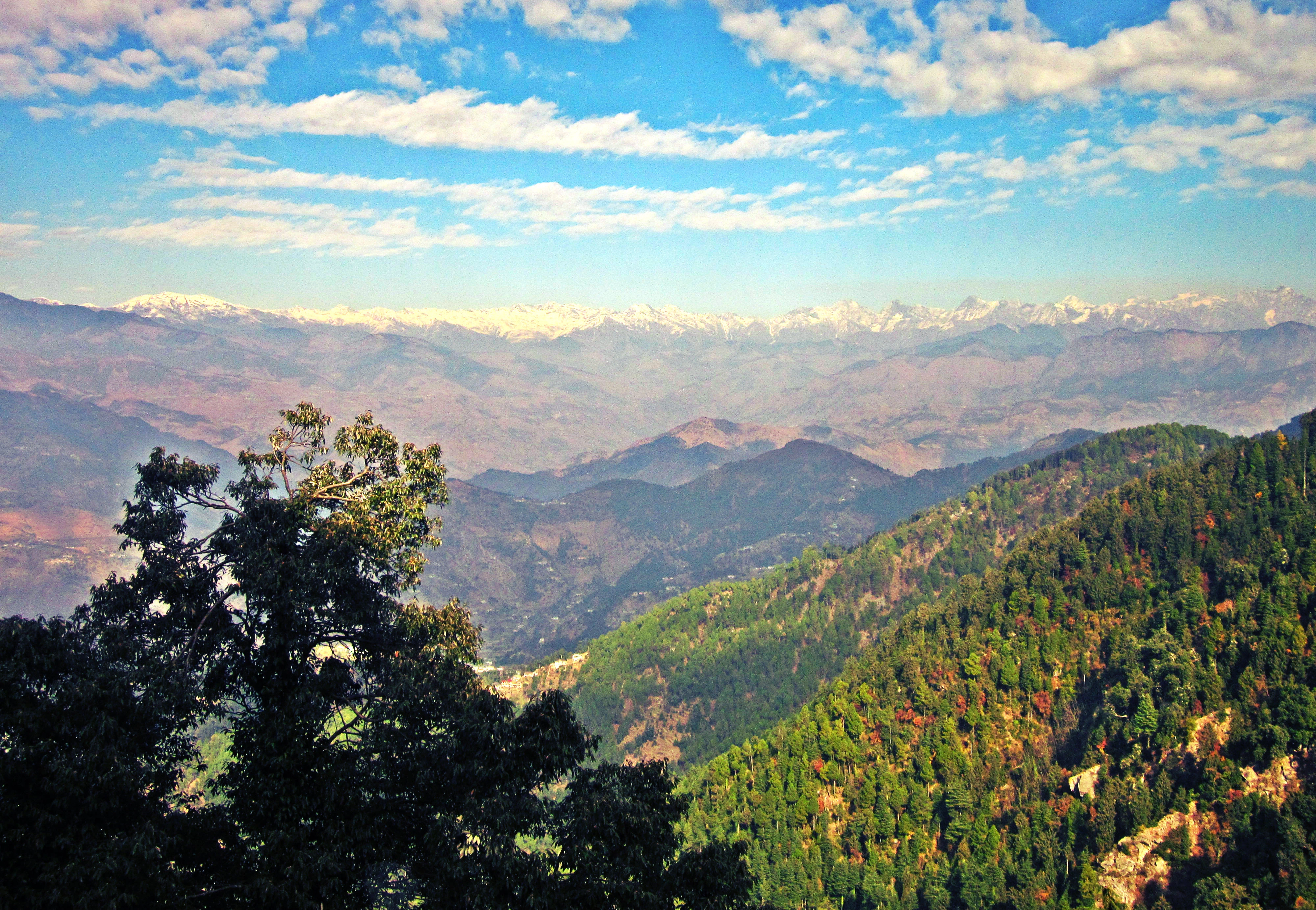Pattadakal is an ancient religious and cultural complex of 7th and 8th century CE Hindu and Jain temples in northern Karnataka. It is located on the banks of the Malaprabha River in the Bagalkote district, 23 KM from Badami and 10 KM from Aihole. The group of monuments at Pattadakal along with Badami and Aihole collectively form a significant heritage centre. In total there are more than 150 Hindu, Jain, and Buddhist temples, monuments, and archaeological discoveries of dolmens and cave paintings, dating from the 4th to 10th centuries. Art and architecture enthusiasts typically visit Badami, Aihole and Pattadakal by renting a chauffeur driven car from Bangalore during the monsoon or winter months.
Table of Contents
- Things to do in Pattadakal
- History & Geography of Pattadakal
- How to Plan a trip to Pattadakal
- Places to stay in Pattadakal
Things to Do in Pattadakal
The most important thing to Pattadakal is to take a walking tour of all the religious and archaeological sites.
The Pattadakal temple timings are from 6 AM to 6 PM. With recent Covid-19 restrictions, the Pattadakal timings might be updated. So, check with the local information centre before you go.
Virupaksha Temple – The largest temple on the site built by queen Lokamahadevi, to commemorate her husband Vikramaditya II’s victory over the Pallava Kings of Kanchipuram. The temple boasts inscriptions and stone carvings on pillars, walls, and façade, and houses various Hindu deities.
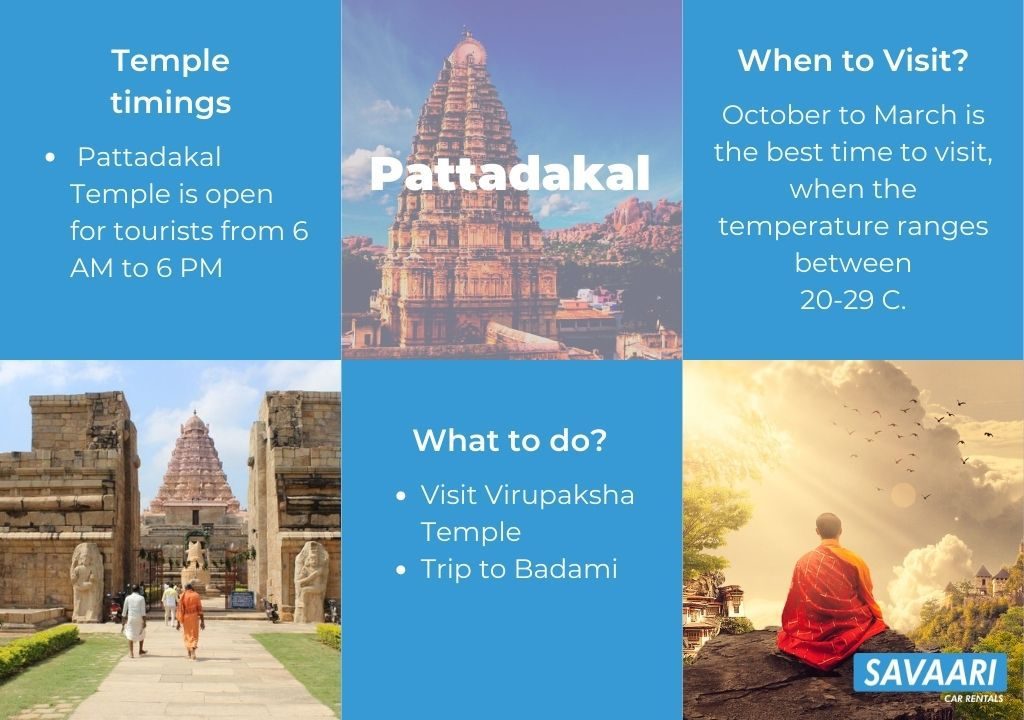
Mallikarjuna Temple – A little smaller but similarly designed as the Virupaksha temple, this was built in the classic Dravidian style. The front porch has a relief of Narsimha killing Hiranyakashyap.
Papanatha Temple – Originally built in the Nagara style, the temple construction was later updated with Dravidian architectural elements. The temple walls boast intricate carvings of scenes from Ramayana and Mahabharata.
Pattadakal temples
There are 10 major temples, of which nine are Hindu temples and one is a Jain temple, along with smaller shrines and plinths. Eight of the Hindu temples are clustered together to form the biggest Pattadakal temple. The temples are surrounded by vast, green lawns with tended gardens and hedges.
The Hindu temples are connected by a paved walkway and are dedicated to Shiva. Each enshrines a stone lingam in its inner sanctum. Though each construction looks similar, every temple is unique with carved pillars and towers. The outer walls are adorned with reliefs and derelict figurines, representing a god or a goddess. All temples share a common layout design, each with the main temple and an outer sanctum.
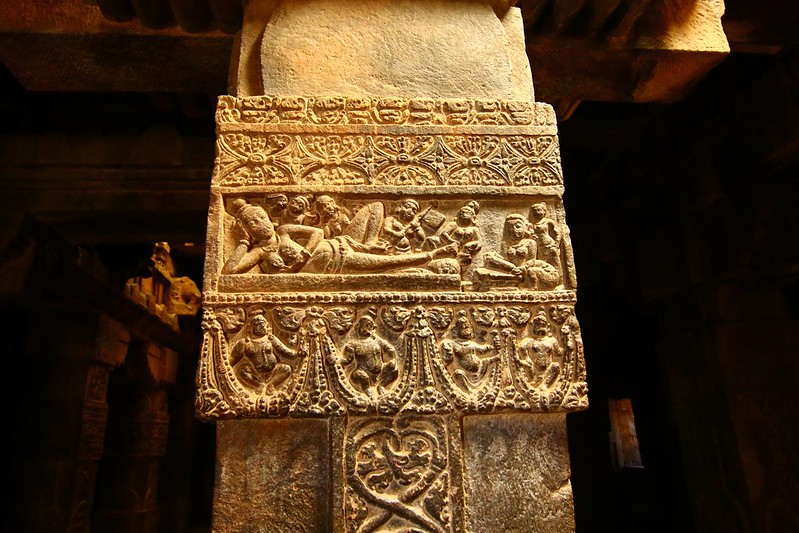
The Hindu temples are generally dedicated to Shiva, but also depict elements of Vaishnavism and Shaktism. The artworks reflect stories from the Ramayana, the Mahabharata, the Bhagavata Purana, and other Hindu texts, such as the Panchatantra and the Kirātārjunīya. The Jain temple is dedicated to a single Jina.
The most significant temples of Pattadakal are the temples of Virupaksha and Mallikarjuna. Though most temples were commissioned by kings, the major ones were initiatives of the queens.
The Virupaksha Temple, the largest temple on the site, was commissioned by Lokamahadevi in the 8th century. The temple interior with the walls, pillars, and columns, bear carvings from the epics and the Puranas. The inner sanctum enshrines a Shiva lingam, and the outer porch has a stone statue of Nandi.
Similarly, the temple of Mallikarjuna was commissioned by queen Trilokamahadevi. The temple’s construction challenges that of the Virupaksha Temple with similar kinds of carved pillars, wall reliefs, and towers, each with narratives from Ramayana and Mahabharata, and instances from Shiva Purana.
The temple architecture reflects a fusion of two major architectural styles of ancient India – the Rekha-Nagara-Prasada of the North and the Dravida-Vimana of the South. Four temples were built it in the Dravidian style and four in the Nagara style. The Papanatha and Virupaksha temples were built with a combination of both.
Places to visit in Pattadakal
There is more to the tourism site than the heritage structure.
Badami
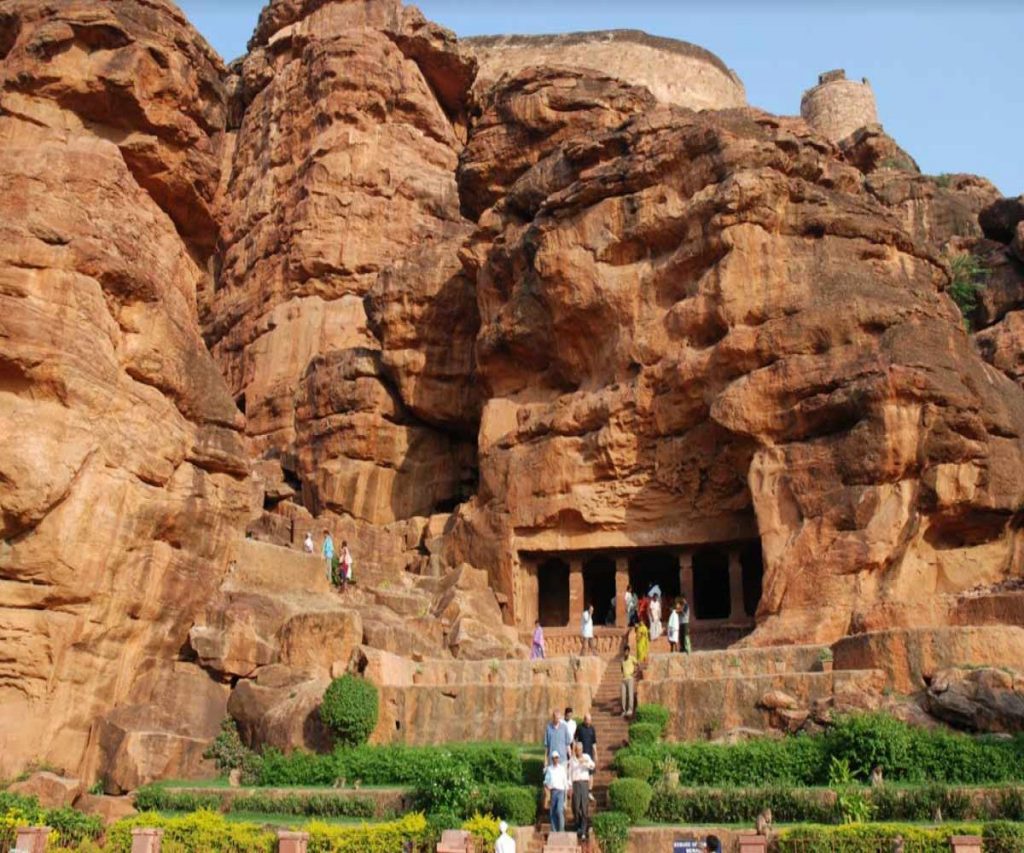
About the Place: The historic town of Badami is famous for ancient, rock-cut caves. The Badami cave system is an expansive complex comprising Hindu, Buddhist, and Jain temples cut out of sandstone, which date back to the 6th century. These caves are not only one of the oldest of the Deccan region but also make to the list of famous caves in India and South Asia.
Timings: 9 AM to 5.30 PM
Entry Fee: Rs 10
Best time to visit: October to March
How to reach: It is located at 21.7 KM from Pattadakal and takes about 30 minutes to reach via Pattadakl Road and NH 367. You can book a cab from Pattadakal to Badami.
Aihole
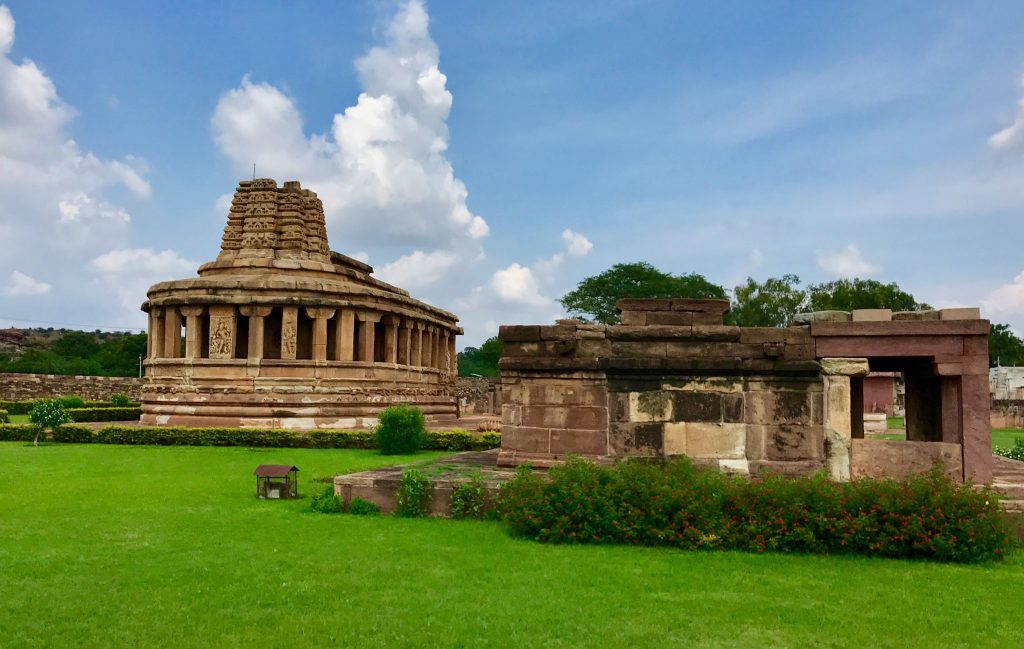
About the Place: The major archaeological site features over 120 stone caves and temples dating back to the 6thcentury. Of these, about 100 temples enshrine Hindu gods and goddesses and the remaining temples are dedicated to Jain Tirthankaras. There is one Buddhist temple with a monastery built on its premise.
Timings: 9 AM to 5 PM
Entry Fee: Rs 15
Best time to visit: October to March
How to reach: Aihole is 13.2 KM from Pattadakal and takes about half and hour via Pattadakal Road. You can rent a local car or book a taxi to reach Aihole.
Places to Eat in Pattadakal
- Mahukuteshwara Vegetable Meals
- Shiva Prasad Lunch Home
- Geeta Darshini
- Golden Caves Cuisine
- Hotel Bharat
History & Geography of Pattadakal
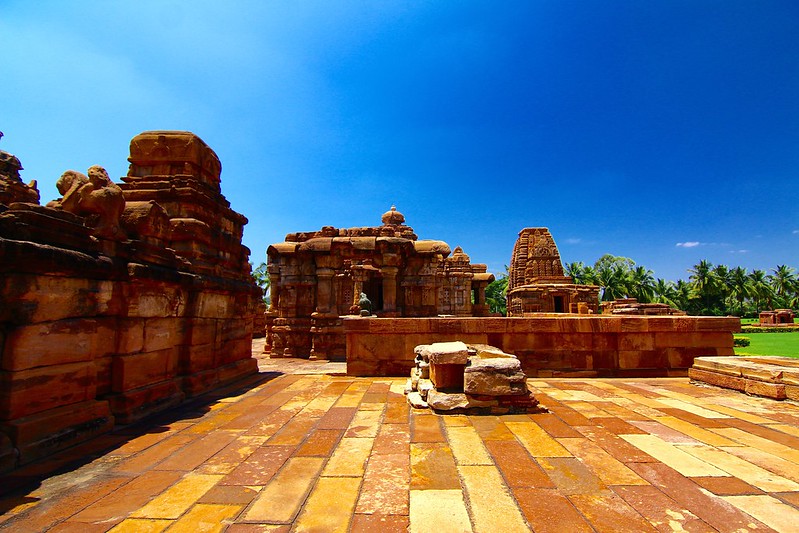
Pattadakal history is also quite long and illustrious.
History
Pattadakal or translated as a “place of coronation” was considered a holy place and used as a coronation venue for Chalukya kings. The place was also called Raktapura or Red City, owing to its red soil and golden sandstones that cover the landscape. The site is mentioned in Srivijaya’s ancient texts and in Ptolemy’s geography of India, where he referred to it as Petirgal.
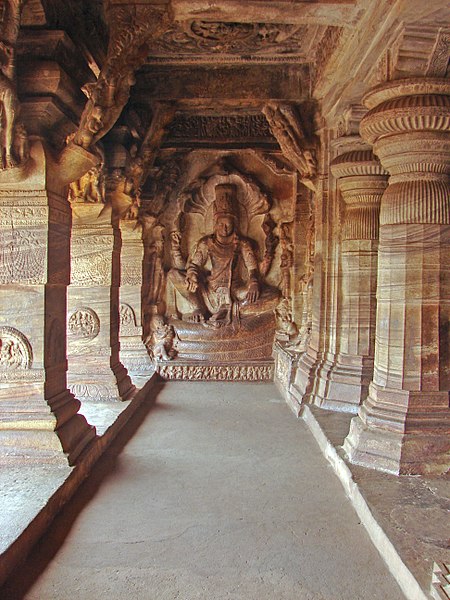
During the Gupta reign, this place in Karnataka became a major cultural and religious centre for innovations in architecture and the evolution of ideas. Later, during the Chalukya empire, the kings commissioned most of the temples that we see today.
After the decline of the Chalukya empire, the region was annexed by the Rashtrakutas, who ruled it till the 10th century. In the 11th and 12th centuries the region once again came under the rule of the late Shalukya kings. From the 9th to 12th centuries newer Hindu, Jain, and Buddhist temples and monasteries were built in Pattadakal and became a hub of population and wealth.
By the 13th century, the Delhi Sultanate rulers conquered the region until the rise of the Vijayanagara empire, when their kings fought off the Sultanate to keep their control. Pattadakal remains unaffected. In the following centuries, the temple changed many hands from the Sultanate of Bijapur to the Mughals, Maratha, Haider Ali and Tipu Sultan, to finally becoming a part of the British East India Company when they annexed this region to the neighbouring princely states.
Hidden Facts about Pattadakal
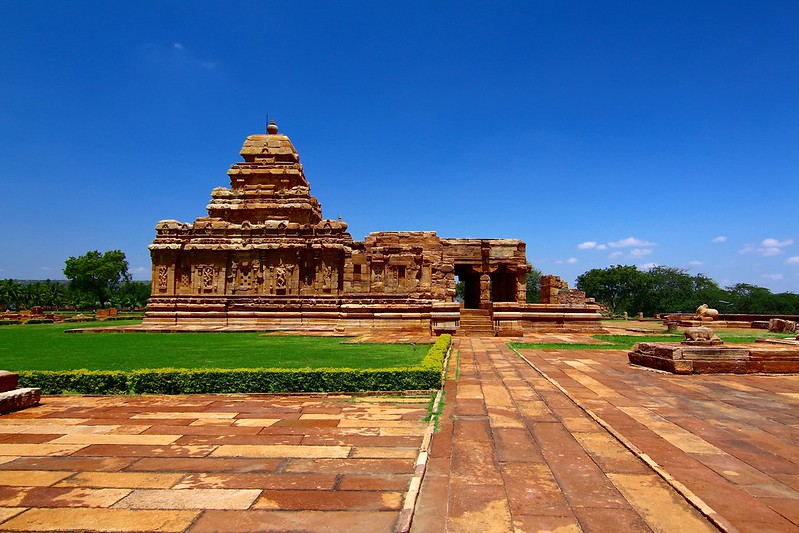
Pattadakal information holds more value in not just its deep-seated history but also in its trivia. Here are a few interesting facts about Pattadakal.
- Unlike the other eight Hindu temples, the Narayana temple does not have any Hindu shrine in it. Instead, there is a solo shrine of a Jina.
- The temple construction was considered ahead of its time, with the use of metal reinforcements to hold the rocks in place.
Pattadakal UNESCO World Heritage Site
The Pattadakal world heritage site is protected and managed by the Archeological Survey of India. According to art historian Cathleen Cummings, “the monuments of Pattadakal are historically significant example of religion, society, and culture, particularly Hindu and Jain, in the Deccan region and is an expression of Hindu kingship and religious worldview of 8th-century India.”
The monuments are historical evidence of the interaction between the early northern and southern styles of art and culture. They are also the earliest surviving examples of India’s architectural heritage.
In 1987, UNESCO declared Pattadakal as a World Heritage Site for its contribution to India’s history and described it as “a harmonious blend of architectural forms from northern and southern India” and an illustration of “eclectic art” at its height.”
How to Plan a Trip to Pattadakal
How to Reach Pattadakal
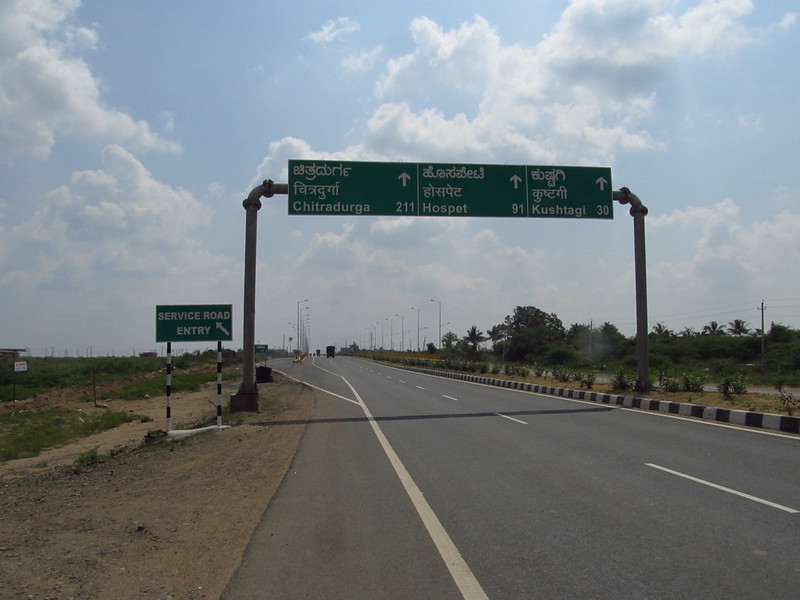
By Train
The nearest railway station is in Badami, 17 KM away. You can book a taxi or a local bus from the station to reach Pattadakal.
By Road
There are several state-run and private buses to Pattadakal from other cities of Karnataka like Bangalore, Badami, Aihole, Belgaum, Hubli, etc. The best way to travel is to rent a private car or book a cab from any of these cities to travel to Pattadakal. If you are travelling by road from Bangalore to Hubli, then this useful road travel guide will definitely assist you.
By Flight
The nearest airport is Belgaum, 150 KM away. You can fly to Belgaum from any other city and then take an airport taxi or book a car to reach here.
Best Time to Visit Pattadakal
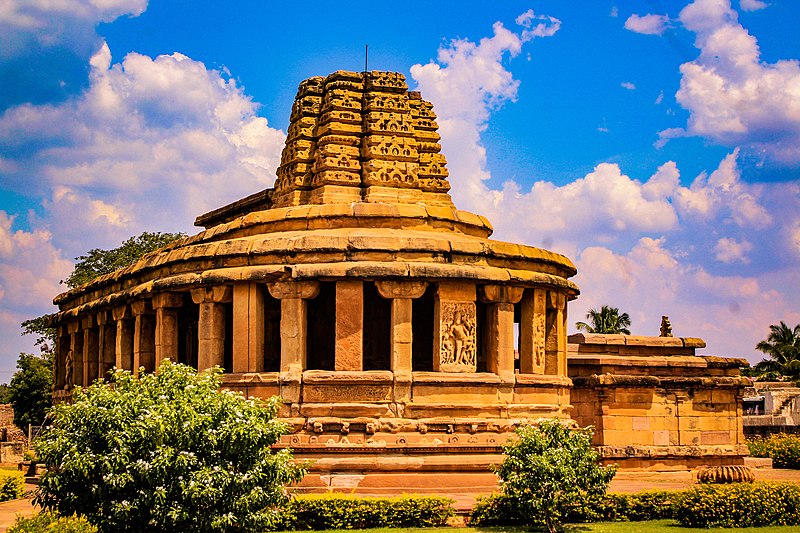
October to March is the best time to visit Pattadakal when the weather is dry and pleasant to explore the outdoors and archaeological sites. July to September can also be good unless rainfall is heavy.
[Also Read: All you need to know about Mahabalipuram – Travel Guide]
Places to Stay in Pattadakal
Some of the best hotels in Pattadakal Karnataka are –
- The Heritage Resort
- Clarks Inn
- Hotel Mayura Chalukya KSTDC
- Hotel Badami Court
- Hotel Rajsangam International
Download our Savaari car Booking app for a smooth and pleasant journey.
Last Updated on February 2, 2024 by Swati Deol



